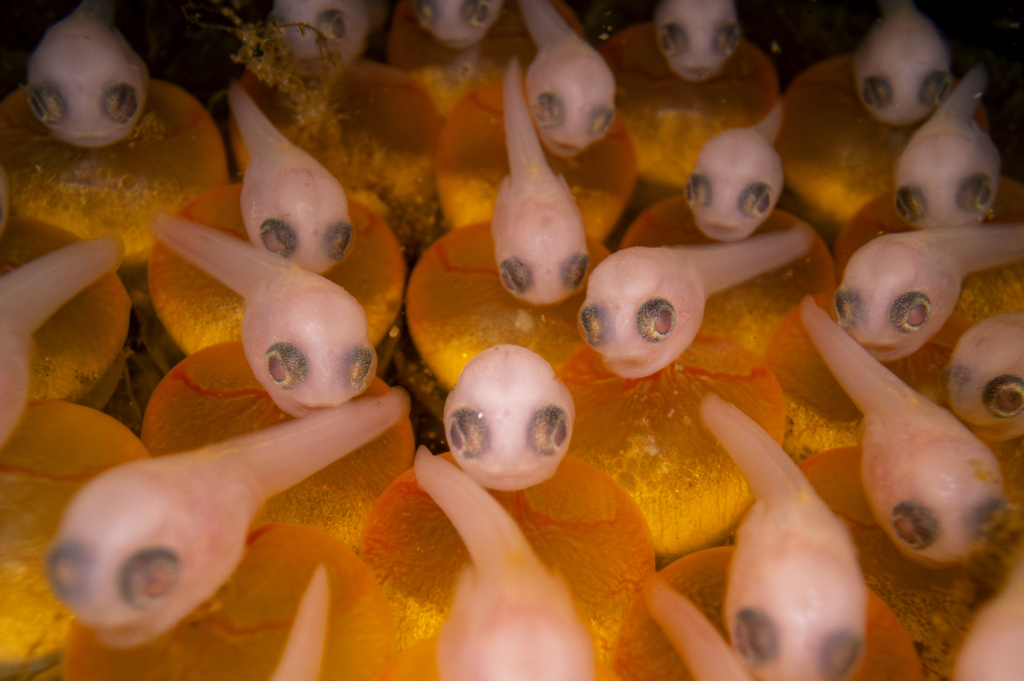January 2025 Wildlife Photography Contest Advanced Winner
Theme: Babies
“Not Ready For Prime Time” by Shane Gross
The plainfin midshipman is a remarkable fish species found along the west coast of North America. Each year, they migrate from the deep ocean into the intertidal zone—an area between high and low tide—to spawn, build nests, and care for their young for months before returning to the depths.
This was my second year documenting their fascinating breeding behaviors. During my first attempt, I discovered that when the hatchlings reach a certain size, they emerge from their eggs but remain attached to their yolk sacs, which are glued to a rock. However, after eagerly reviewing my images at home, I realized that moisture had seeped inside my lens, ruining every shot. My gear needed repairs, and I had to wait an entire year for another opportunity.
When the next breeding season arrived, I was ready—this time with my Laowa probe lens, whose waterproof design allowed me to peek under rocks and capture these tiny creatures in their hidden world. At low tide, I carefully searched for a suitable nest, setting up my two small waterproof lights and meticulously adjusting my manual-focus lens to achieve precise sharpness. The process was hot, uncomfortable, and challenging—but absolutely worth it.
I love these fish, and I’m grateful for the chance to share their story through photography.


